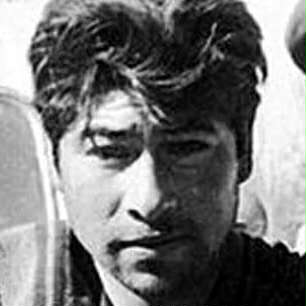
1938 - 1963
Jorge del Carmen Valenzuela Torres
Summary
Name:
Nickname:
El Chacal de Nahueltoro (The Jackal of Nahueltoro) / El Campano (The Bell) / El Canaca (The Chinaman) / La Trucha (The Trout)Years Active:
1960Birth:
August 23, 1938Status:
ExecutedClass:
Mass MurdererVictims:
6Method:
Stabbing with scythe / StompingDeath:
April 30, 1963Nationality:
Chile
1938 - 1963
Jorge del Carmen Valenzuela Torres
Summary: Mass Murderer
Name:
Jorge del Carmen Valenzuela TorresNickname:
El Chacal de Nahueltoro (The Jackal of Nahueltoro) / El Campano (The Bell) / El Canaca (The Chinaman) / La Trucha (The Trout)Status:
ExecutedVictims:
6Method:
Stabbing with scythe / StompingNationality:
ChileBirth:
August 23, 1938Death:
April 30, 1963Years Active:
1960bio
Jorge del Carmen Valenzuela Torres was born on August 23, 1938, in Cocharcas, a rural locality of San Carlos in the Ñuble Province of Chile. He was the son of Melvina Torres Mella and Carlos Alberto Valenzuela Ortiz. His early life was marked by instability and hardship. His father died when Jorge was just five years old, and his mother remarried shortly after — to one of her late husband’s older sons from a previous marriage. This deeply fractured family dynamic contributed to a turbulent childhood. At the age of seven, Valenzuela left home and began wandering the Chilean countryside, surviving by taking on odd jobs and occasionally resorting to petty theft, including stealing livestock.
By his late teens and twenties, Valenzuela’s life was characterized by poverty, transience, and alcoholism. He worked as a laborer and farmhand but often lost employment due to his drinking and erratic behavior. He drifted from town to town, using various aliases to avoid legal consequences for minor crimes. Despite his troubled life, there is no record of significant violence before the events that would make his name infamous in Chilean criminal history.
In the late 1950s, Valenzuela met Rosa Elena Rivas Acuña, a 38-year-old widow with five children from a previous marriage to Óscar Armando Sánchez, who had died months earlier. They began living together in a modest house in Nahueltoro, Ñuble Province. However, Valenzuela’s heavy drinking and violent temperament soon created tensions. The family was eventually evicted due to his reputation for drunkenness, and the couple moved to a small property on an island in the Ñuble River, where their volatile domestic life continued.
murder story
On August 20, 1960, Jorge del Carmen Valenzuela Torres was at a ranch he had built with Rosa Elena Rivas Acuña, a widow with five children. He had been waiting for Rivas to return with money from her widow's pension so he could buy alcohol. However, Rivas could not get the money because of a bus malfunction. When she came back without it, Valenzuela became extremely angry.
In his fit of rage, he killed Rivas using a scythe. He then turned his anger on her five children, one of whom was just a six-month-old baby. After committing these acts, Valenzuela fell asleep in his drunken state.
When he woke up and realized what he had done, he placed stones over the bodies of the victims for reasons that are still unclear. He then fled the area, changing identities to evade capture. He used names such as "Jorge Sandoval Espinoza" and "José Jorge Castillo Torres." While on the run, he was also suspected of killing a man named Pedro Ojeda, but he was never charged with that crime.
Several days later, a local landlord, Exequiel "Quelo" Dinamarca, discovered the bodies and reported them to the police. About a month later, Valenzuela was found in the area of General Cruz in Pemuco. Two locals managed to capture him in a sack and handed him over to the police.
After he was arrested, Valenzuela showed signs of remorse for his crimes and worked to improve himself in prison. He learned to read and write, became a more committed Catholic, and even learned guitar-making. Despite his efforts to reform, Valenzuela was executed by firing squad on April 30, 1963. His execution raised questions about the justice system and the idea of rehabilitation.